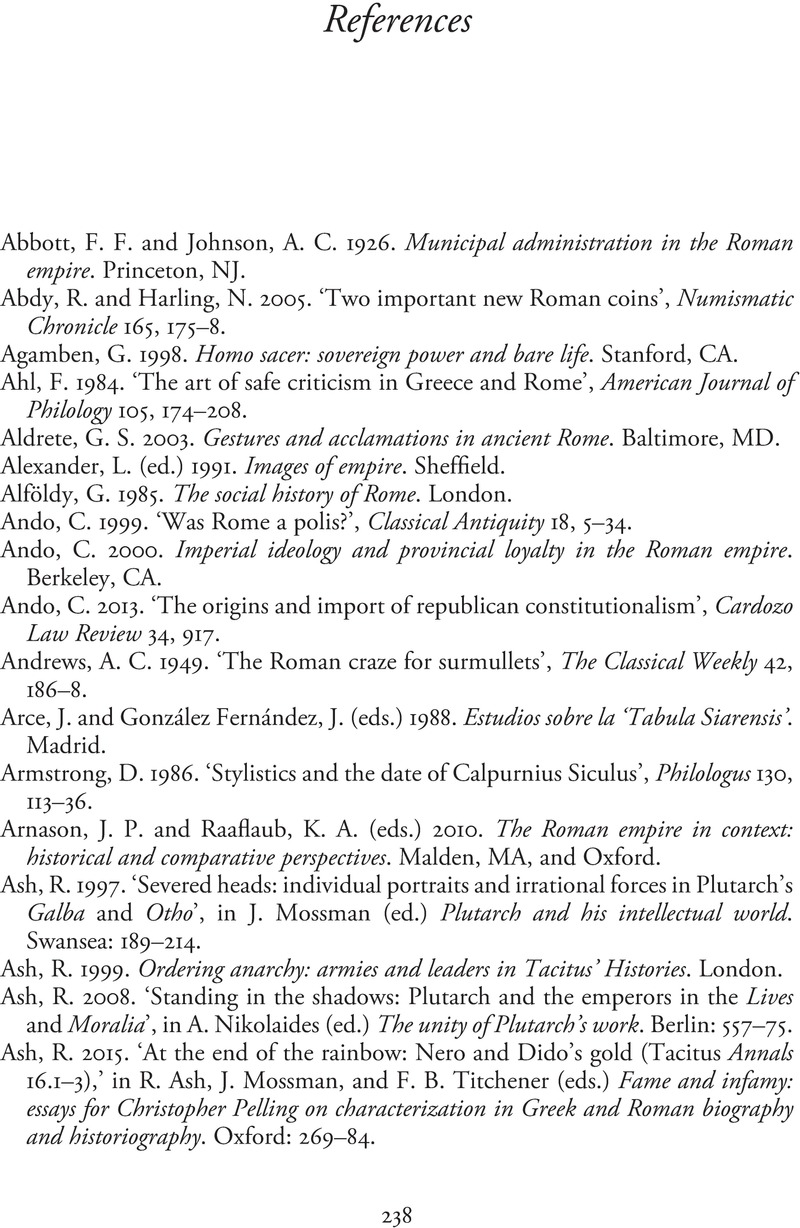Book contents
- Imagining the Roman Emperor
- Imagining the Roman Emperor
- Copyright page
- Contents
- Dedication
- Preface: in omnibus varius – A Multifaceted Emperor
- Acknowledgements
- Abbreviations
- Introduction An Imagined Emperor
- Chapter 1 A History of the Roman Emperor
- Chapter 2 The Emperor As an Arbiter of Justice
- Chapter 3 The Generosity of the Roman Emperor
- Chapter 4 Wonder Tales
- Chapter 5 Wisdom and Wit: Making Fun of the Emperor
- Chapter 6 Living in an Age of Gold, or the Emperor As a Temporal Figure
- Coda
- References
- Index
- References
References
Published online by Cambridge University Press: 27 July 2023
- Imagining the Roman Emperor
- Imagining the Roman Emperor
- Copyright page
- Contents
- Dedication
- Preface: in omnibus varius – A Multifaceted Emperor
- Acknowledgements
- Abbreviations
- Introduction An Imagined Emperor
- Chapter 1 A History of the Roman Emperor
- Chapter 2 The Emperor As an Arbiter of Justice
- Chapter 3 The Generosity of the Roman Emperor
- Chapter 4 Wonder Tales
- Chapter 5 Wisdom and Wit: Making Fun of the Emperor
- Chapter 6 Living in an Age of Gold, or the Emperor As a Temporal Figure
- Coda
- References
- Index
- References
Summary

- Type
- Chapter
- Information
- Imagining the Roman EmperorPerceptions of Rulers in the High Empire, pp. 238 - 264Publisher: Cambridge University PressPrint publication year: 2023



